📙 #042 - Time-shifting, and how to sell pen plots
In which I tell you everything I know about selling pen plots, apart from all the stuff I forgot. Plus guilt about time-shifting social media, and a mild bit of stress.
I wrote this newsletter one way—introducing a theme, adding supporting material, and then building to an interesting nugget of information. But then I realised it'd be better for everyone if I just reversed the whole thing and started with the useful stuff. I also removed all the introduction and supporting material, and then I ran out of time, so this is a bit of a bumpy ride.
# HOW TO SELL STUFF - i.e. pen plots
Sell the solution to a problem.
Or, to expand on that a little, work out the buyer's problem and then offer them the solution to the problem.
This sounds simple, but it took me ages (and working with someone a couple of years back who was helping me plan my shit out) for it to properly sink in. For me, the "problem" is defined as this...
Someone wants to buy a unique gift or piece of artwork for themselves, or often, more likely, a friend but wants to avoid paying the price of an original painting.
The "solution" is a pen plot (or a print) where the design is created with code and an algorithm. Each time the code is run, the design is different. They'll be from the same series, but each one is unique, and that's important.
Pricing art, very broadly & badly, goes like this...
💰 Open edition print (of a painting/artwork)
💰💰 Limited edition print (of a painting/artwork)
💰💰💰 Limited edition screenprint, lino-print, something other than a printer print.
[Pen plots will go here]
💰💰💰💰💰💰💰 The original painting/artwork
So, buying an open-edition print for someone is cheap/easy (relatively), whereas a limited edition is more expensive. Of course, in both cases, it's not unique.
If you want to get (or gift) something no one else has, you're into the realm of the actual original painting or illustration, which is often big bucks.
In my mind, a pen plot, something created from code with a drawing machine, fits snugly between a limited-edition screen print (aren't all screen prints limited edition?) and an original painting. It's created with print reproduction technology, but one that can take a lot longer to create a single output, but it's also unique, like an original painting or artwork. So the solution is...
A pen plot is (often) a unique artwork for less than the price of an original painting/illustration/artwork, and little else offers that.
Solving the problem of "How can I buy/gift a one-of-a-kind artwork without breaking the bank?".
I mean, it's that or a glazed mug from a pottery.
# HOW TO SELL STUFF PART TWO - settle worries
The trick to explaining on your website, "Hey, here's your problem: you're looking for something one-off and unique you can hang on the wall, but original paintings are too much; here's something you probably haven't heard of before, and here's how it works" is left to the reader.
Personally, I suspect lots of photos and videos help.
The other thing to do is remove worry and obstacles, such as writing...
The plot is sent unframed; if you want to frame it, this is how big it is: w*h in inches/cm.
It uses archival ink and paper, so it won't fade
or
The ink used may change when exposed to sunlight for an extended period; this is a natural reaction of ink, but you should keep it out of direct sunlight and under glass
Your plot will be shipped in a rigid, secure flat-package/tube with a tracking number so you can follow it every step of the way
Should it get lost, eaten or destroyed by the postal service (very rare but can happen), I offer a full refund or replacement with a similar but not identical design. Please send evidence of damage/destroyed-ness if that's what's happened
Basically any questions or worries the buyer may have, see if you can answer them. Even better, go look at other online print shops and see what they say; take the best bits that you like from each one.
# HOW TO SELL STUFF PART THREE - impulse control (from both sides)
This is from my experience rather than research.
First observation.
People like to impulse buy things; if they can't, you lose the sale.
My impulse, though, is when my machine is drawing a particularly tasty pen plot, I'll often get excited and take photos, then share them as soon as possible on Instagram—seeking that validation and dopamine hit, boo! Perhaps I'll post a few over a couple of days showing the progress.
During that time, someone will go, "Hey, this is great. Can I buy it?"
And I answer, sure, but not yet; I still need to put it in the shop; it should be up there in a couple of days. But of course, the moment of impulse purchase has gone, and when it is in the shop, posting more photos has less impact than when they first hit. So unless you're particularly good at building up "hype" for a "drop", and spoiler, I'm not, the more correct thing to do is...
Write the code for the pen plot
Record any sketches or WIP
Take photos and videos of the process
Edit the photos and videos
Write the description, title, put it all in the shop
Make it go live in the shop
Then post about it when people can actually buy it
In the past, when I've done this, it can easily take 5-8 weeks from the time a plot is "finished" to when I'm posting about it.
There was a time a while back when everything I was posting was "time-shifted" by about two months. This seemed weird, but sales-wise, it was a lot better.
The dopamine and instant validation weren't quite as good, though.
It's not as bad as some of my writer friends, though. They can finish a book and then wait 18 months or so before it actually comes out, with a whole lot of milestone tasks and promotions to hit at various points along the way.
The short story is that the better I planned and the more patient and intentional I was, the better I was at selling things. But I had to be way more organised than my natural state, and I already consider myself a fairly organised person. On the flip side, just yoloing it and going with the flow worked shockingly badly, lol.
Second observation.
Each extra step in the buying and checkout process gives the buyer a chance to overcome their buying impulse. The place where this dropout happens the most is when shipping is added to the price.
They'll see a plot on sale for $80 and be like, "Sweet, I'll grab that." Then they'll plug in their address, and suddenly, it's "Hey, $110 with shipping." According to my old Shopify analytics, this is the perfect time to decide whether or not to buy.
So, in the end, I rolled the shipping cost into the overall price.
I ship with DHL with full tracking, and so far, they've been the best (UPS, FedEx and Parcelforce can go do one ☠️); inside the UK, shipping is around $15, to the EU is around $35, and to the US is $45. Over the course of a year, my average shipping cost was $30, so that's what I added to the price of everything. Unless they're A5 or A4 plots, which I generally don't sell because the shipping is often more than what I charge for the plot itself.
Basically, it means a plot I'd originally sell for $120 was now $150. If someone from the US bought it, it would eat into the plot price a bit. I'd only make $105 on the print; however, if I was shipping to the UK, it'd make $135.
Ultimately it all averaged out, and the one price anywhere in the world and "free shipping" to remove that "calculating shipping" step was worth it to me.
Again, this kinda falls apart with A4 and smaller plots, down to postcards, which is generally why I don't sell them.
And now you have all my knowledge about selling penplots online.
# TIME-SHIFTING
The reason why I started writing all this, is because I felt some guilt about the fact that I write the first draft of this newsletter the week before it comes out.
I do this so I can finish it the Tuesday before I publish it, record the video & audio version on Wednesday, and then have everything ready to go on Thursday, with buffer room built-in in case anything goes wrong [See notes later!]
This means it's often the case that some pen plot stuff I do on the Monday of newsletter week only makes it onto the following newsletter and can, therefore, really be about three weeks old news at that point.
And I feel like the newsletter should be "Here's what's happened in the last two weeks since you got the last one."
So, while I was going to write about all that and how it fits in with everything, it reminded me of the time-shifted structure I had in place when posting new work, which was actually two-month-old work that I'd kept hidden until I'd put everything in the shop. This is also why this edition of the newsletter expanded into "How to sell stuff," and I've filed my "guilt about time shifting stuff in the newsletter" away for another day.
# THE END
It'll come as no surprise that the old studio sale still hasn't happened yet (see newsletters passim), for reasons I can only attribute to massive incompetence of the solicitor at the bottom of the chain, but sunk-cost-fallacy has the whole thing still ongoing. Which caused my stress to spike at the end of last week, and the onset of the symptoms of a cluster headache start to hover around on Monday, which all got a bit much. Meaning I didn't get a chance to revisit this first draft of a newsletter, so this is a bit of a rough cut.
I'm going to talk more about managing stress, burnout, and cluster headaches (and how I generally avoid all three) in my slightly different to regular #Weeknotes video tomorrow, so if you want to keep an eye on my YouTube channel, you'll find it there soon.
Meanwhile, you'll get the next newsletter on September 5th (which I swear will have more pen plotting stuff in). Yay!
Love you all
Dan
❤️



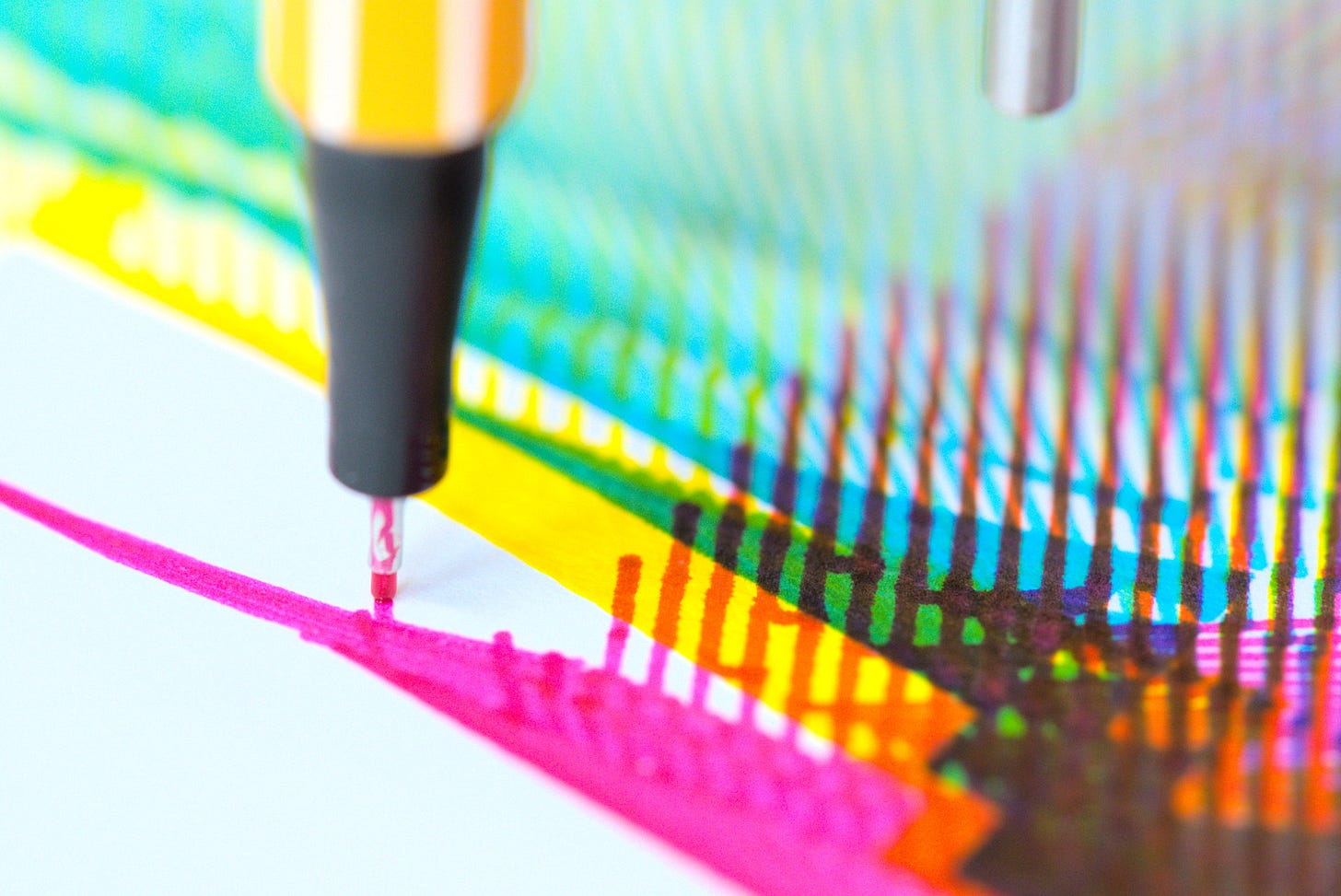
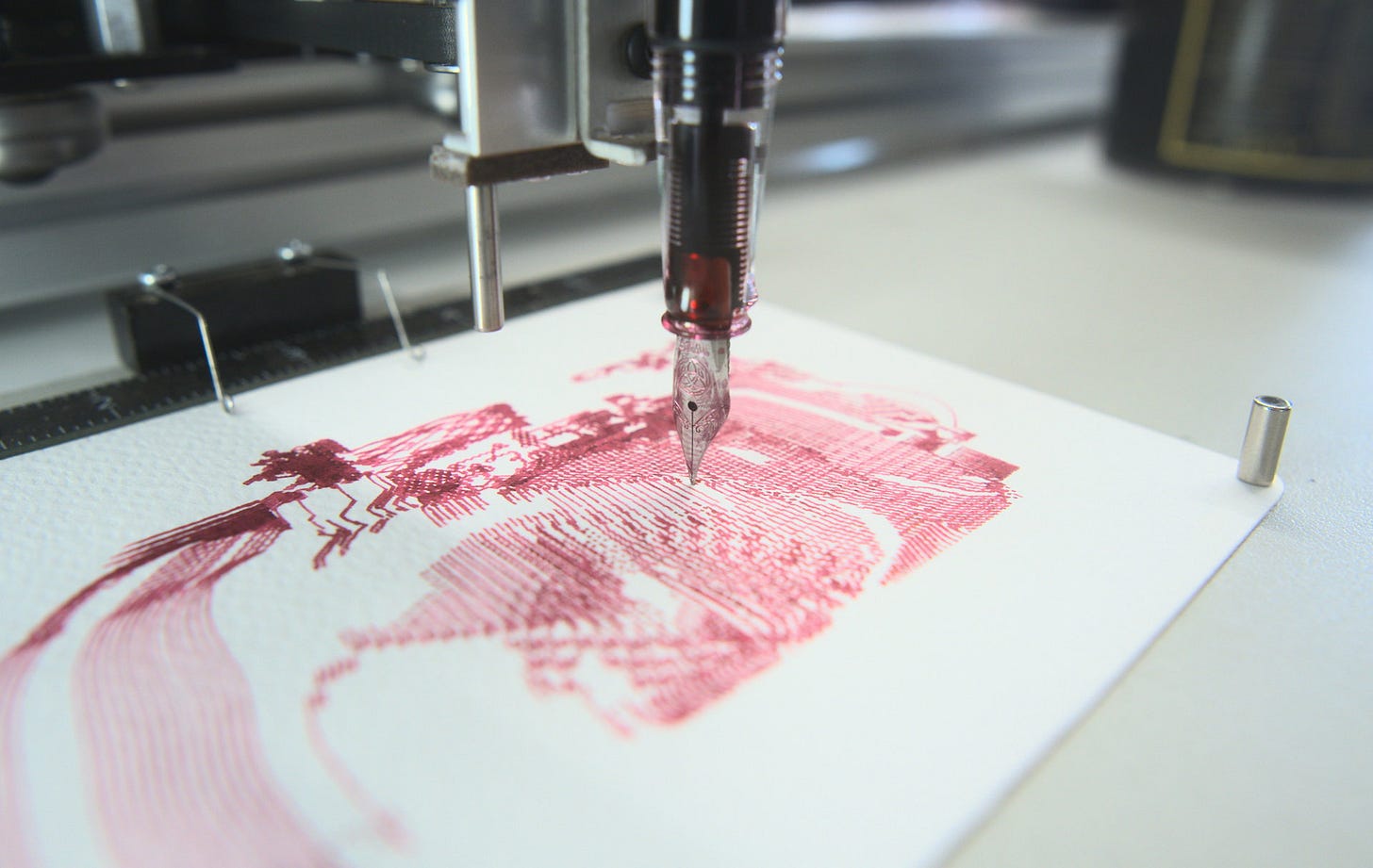
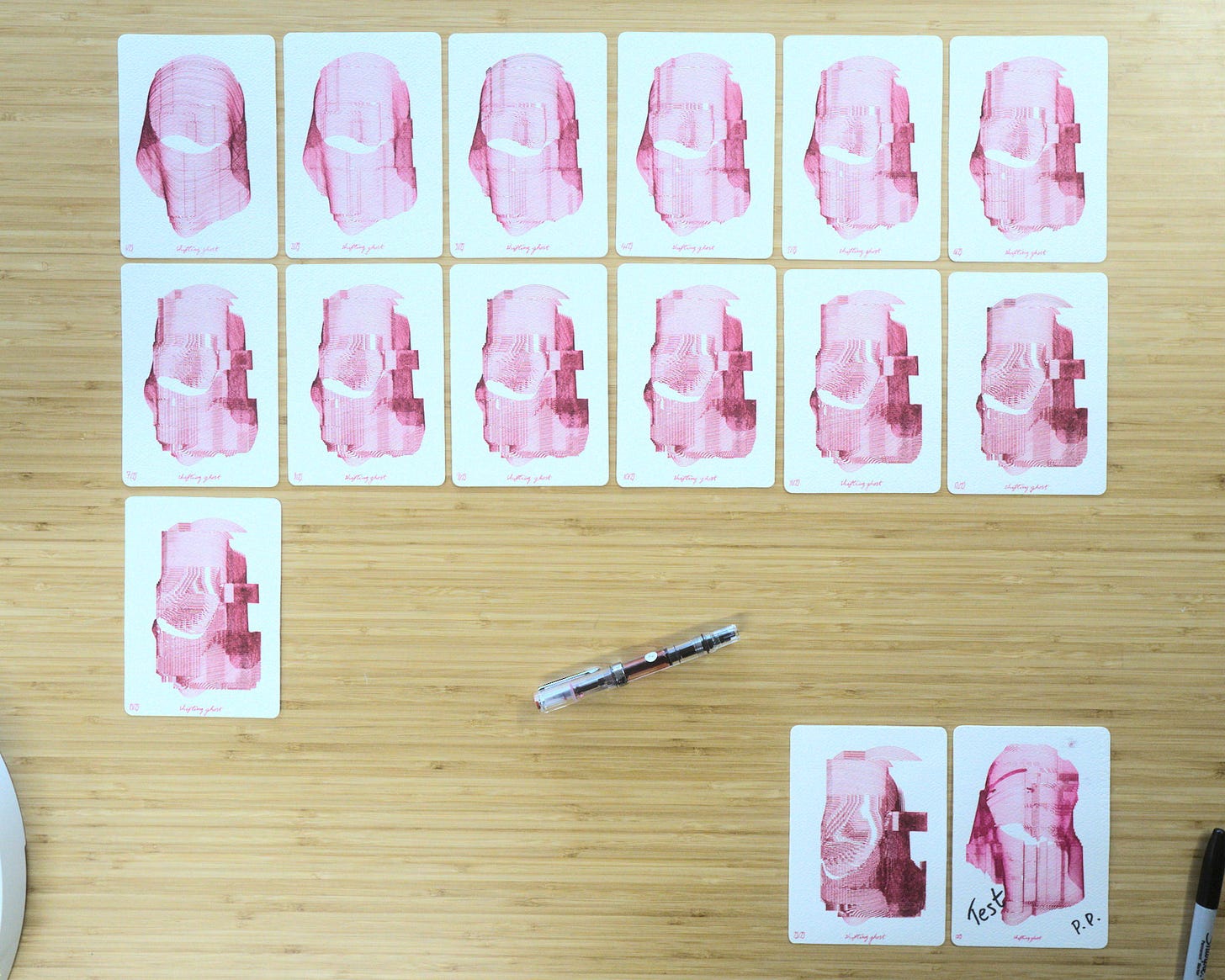
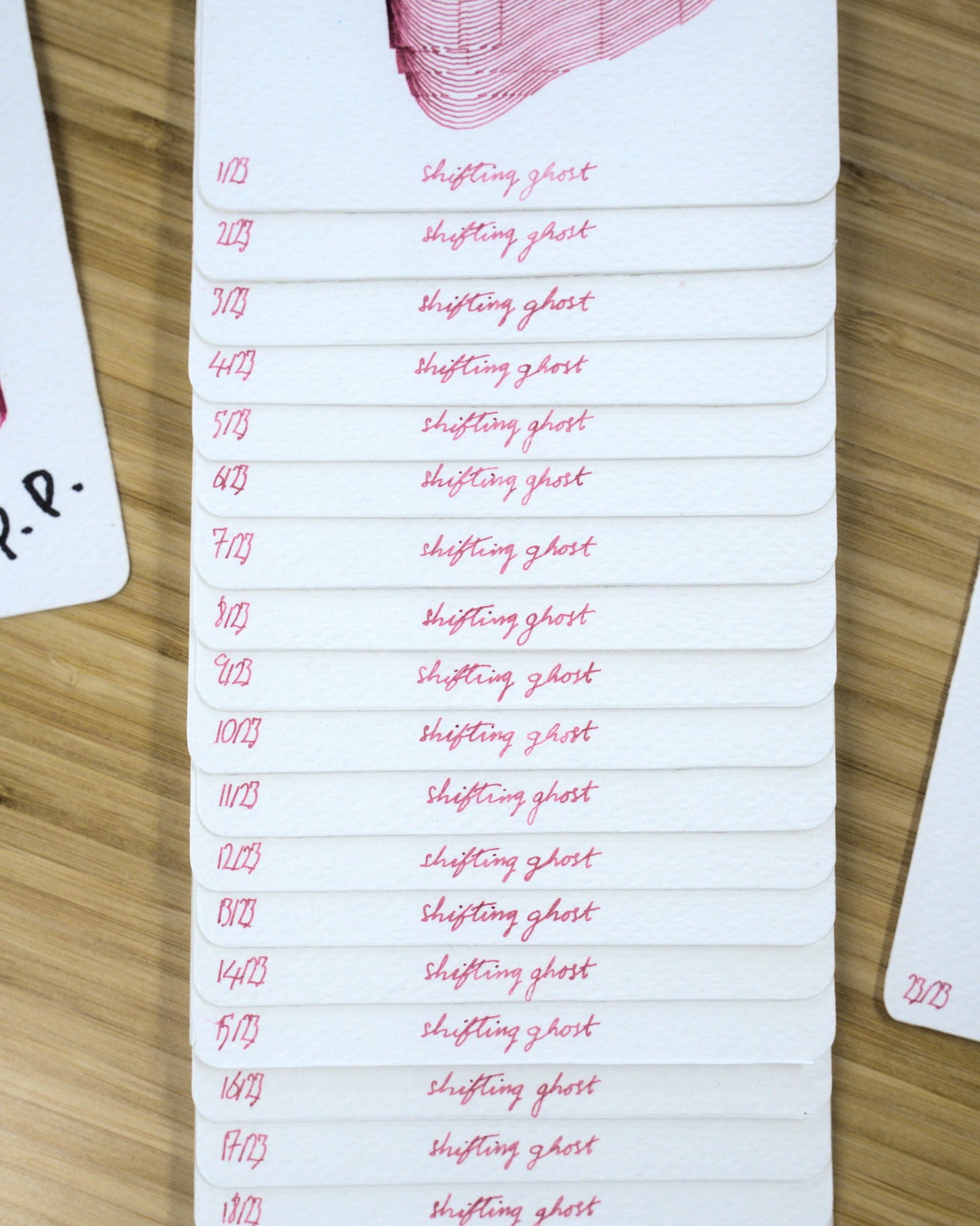
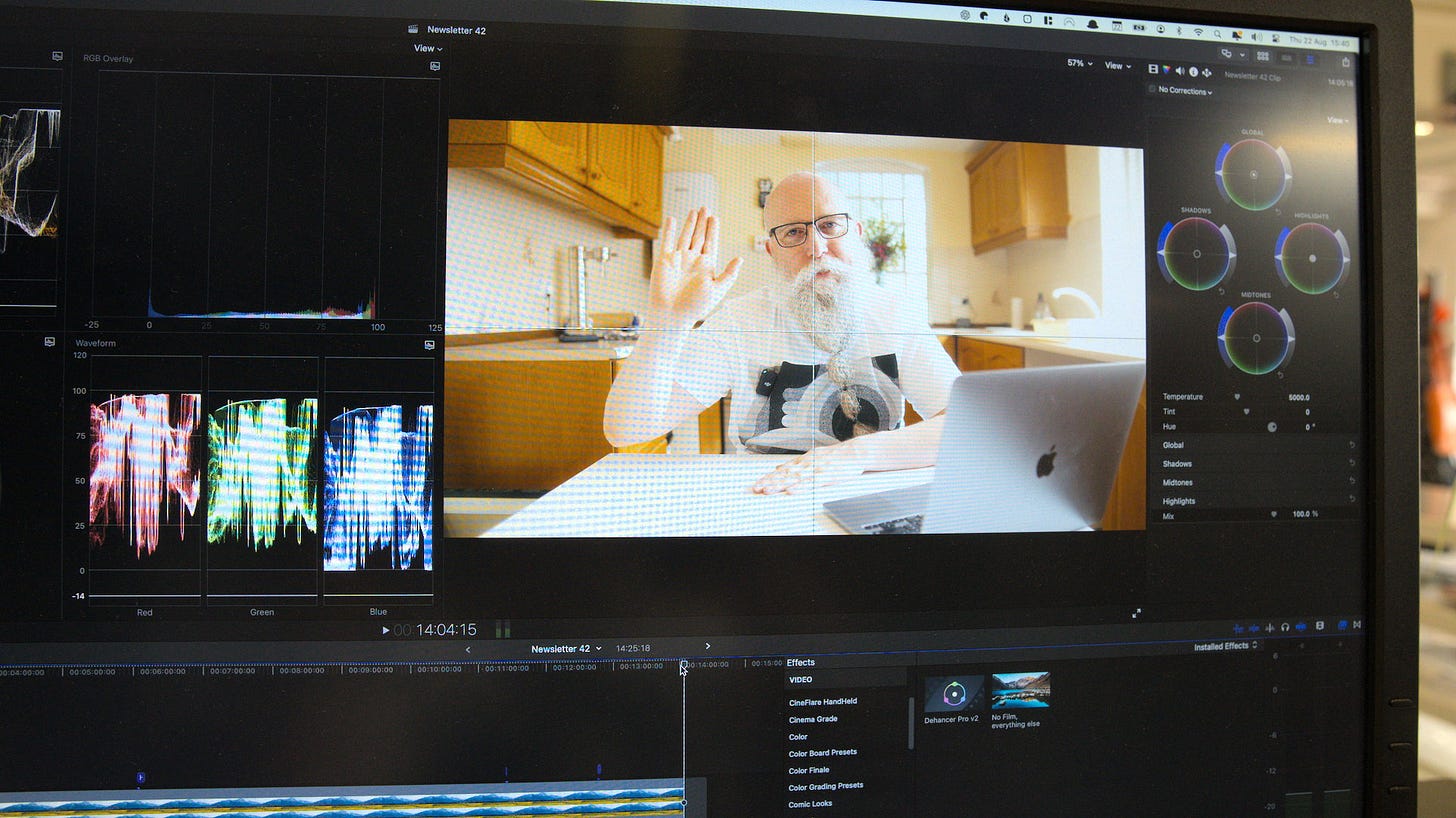
Loved this short course in pricing! :)
Really helpful framing of the value proposition of this style of work. I’ll have to inspect your shop to see how you’re communicating the random nature of what is offered as I’m curious how a “you get something like this, but not exactly this” type sale is communicated. Cheers!